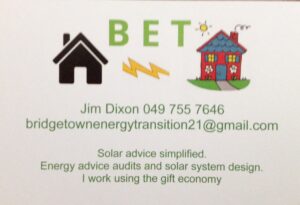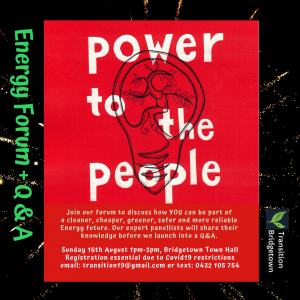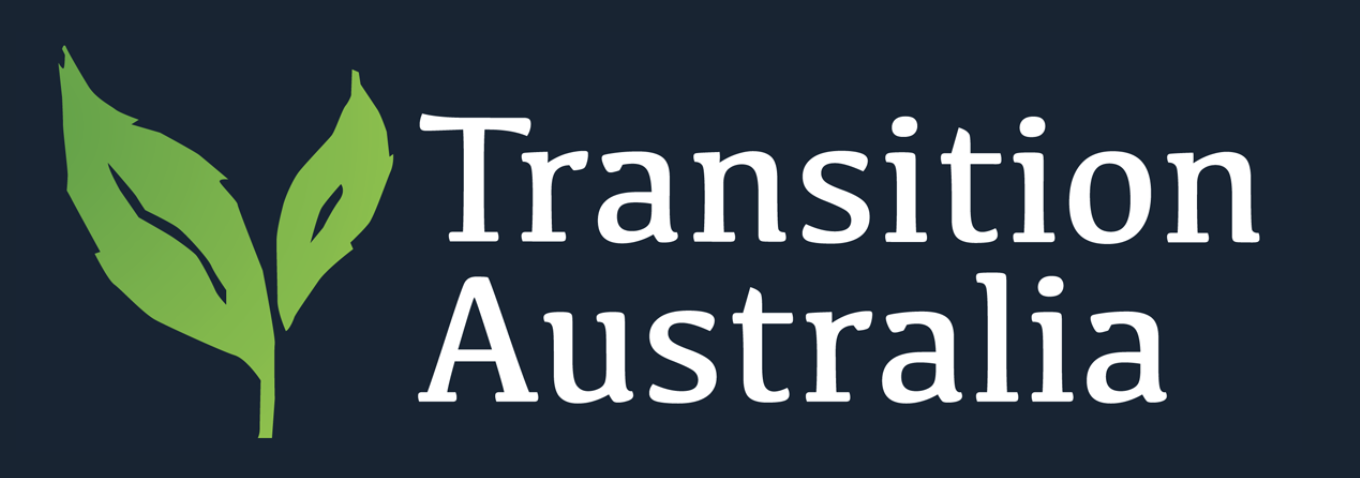Bridgetown Energy Transition (BET)
Energy Audits

Contact Jim on 049 755 7646 or email bridgetownenergytransition21@gmail.com to ask for an Energy Audit or to discuss options to move to more sustainable power options. Jim can provide a host of low cost, simple tips to save energy, as well as advice on choosing and installing solar panels.
Jim works using the “gift economy” (Donate what you can afford to a community group of your choice)
Outcomes from Open Space October 2021 – Q&A.
Thanks to our supporters for the questions, to Jim Dixon for answers provided at the Open Space, and to Geoff Bourgault du Coudray for further comments provided after the event
Q1. Can we have 2nd hand solar panels installed?
- Not advisable as they become out of warranty quite quickly (lots of rules and regulations).
- They can be exported to other countries (see Q2 below)
- Installers will rarely do it but there is nothing to prevent you from using second hand panels as far as we know. If the environmental costs of manufacturing panels and disposing of them were all factored in then we would be reusing the vast majority of the panels being taken off roofs in WA. The Clean Energy Council, through their rebate scheme for new solar panels, has made using second hand panels financially unattractive
Q2. How can we recycle panels and frames?
- 99% of the components of solar panels are recyclable. We are not aware of any companies in WA who are doing this.
- Currently (November 2021). used panels are exported overseas, mainly to developing nations, where there are fewer rules and regulations.
- Some companies in NSW and QLD are dismantling solar to panels to their component parts, to be re-used.
- The aluminium in the panels is the easiest bit to recycle. An opportunity to purse is why Alcoa isn’t participating in the recycling of aluminium in WA,
Q3. Can electric vehicles (EVs) be used to recharge/feed back to your house?
- This facility is referred to as VTG, Vehicle To Grid.
- Some models of EV have VTG capability. However, WA electrical regulations do not allow VTG.
- WA regulations do allow Vehicle to Caravan (VTC), and do allow Vehicle to Load (VTL) where the EV is connected directly to an electrical appliance ( e.g.TV)
- Q3 You can feed power back into your house from some electric vehicles and although you’re not allowed to feed it back to the grid, you can feed it back to your house if you’re off the grid. This has the benefit of reducing the size of battery that your house will require.
Q4. New Chinese EVs are being touted as cheap and reliable. What is your view on this?
- Australia have refused to allow these as they do not conform to Australia design standards.
- The Chinese company BYD (Build Your Dreams) is making arguably the best EV’s available at the moment and plans to start selling them in Australia next year. The Yuan will have a range of nearly 500km and cost just over $40,000. It has a better battery system, which is less environmentally problematic and less prone to fire. Other car manufacturers are buying BYD’s skateboards (chassis and battery), including Tesla!
Q5. Can we get solar without the burning of jarrah?
- Technically feasible, but…
- Less than 5% of the SW WA jarrah felled is used for solar panels. All solar panels made in China use hardwood.
- Lithium and silica sands are alternatives to hardwood, so it is feasible to make solar panels without burning hardwood. Lithium, sourced in Germany, is also being used for solar panels. While silica sand is the most abundant mineral on the planet, it is still a finite resource. It’s also, apparently, the most used commodity after air and water. Most supply is used to make concrete for construction, but it is also used to make glass for buildings, solar panels and electronics like mobile phones and TVs, as well as to make car parts.
- Alcoa is responsible for clearing vast areas of jarrah, a large percentage of which is wasted. A question worth pursuing is why “waste” jarrah isn’t being used to produce the silicon for the panels.
- We do know that in Europe they’re producing batteries without fossil fuels and this is something we would like to do further research on
Q6. Are you aware of any companies that are ‘green” end to end?
- If we consider use of silica “green”, then Yes, we know of one company owned in Perth and operating overseas, and one company in NT.
Q7. Does shade still impact solar and reduce the overall performance?
- Yes, it does. If you are concerned that your solar panels are shaded, e.g. due to growth of trees since the installation of your panel, an Energy Audit is recommended to establish whether your performance is being reduced due to shade.
- Maximisers can be fitted.
Q8. If you have small power usage, is it worth installing solar?
- Ask BET for an energy audit
Q9. What is going to happen to the grid if more of us are feeding back into the grid?
- A common misconception is that all power produced by our household solar panels is fed directly back to the grid. Power produced by solar panels is used to power any electrical equipment in use at the time, and any excess is then returned to the grid.
- If we follow the Eastern States model, we are likely to get a net financial benefit of up to 10-1
- The question implies that the solar power feeding into the grid is the problem. The problem is the nature of the grid that is designed for one directional power from fossil fuel producers to consumers. This can be fixed with technology that is available. The problem is a political one and those making money from the grid as it is will do their best to make solar power the enemy.
- If those in control exert too much influence and stop those who are working hard to make the grid work more effectively and efficiently, then there is a real chance that the grid could fall apart in the near future.
Q10. Have Albany and Denmark Shires contributed to the costs of installing the wind farms, and why is it more viable there?
- Yes, they have contributed.
- Wind farms are more viable in coastal areas, as the wind is more reliable and stronger.
- Offshore wind farms are the most productive.
- An area like Bridgetown, where there are hills, has less reliable winds.
Q11. Tell me more about your Energy Audit service– what does it entail, why might it be useful and what does it cost?
- You don’t need to be contemplating installing solar to benefit from an energy audit. BET can advise on a wide range of low cost, simple steps you can take to reduce your energy consumption (and energy bills).
- For example, choosing different options for your light globes; ensuring that your fridge is set to the optimum temperature settings, is level, has the correct space around it, doesn’t have “stuff” on top of it, sealing windows/doors with draft excluder; insulating the pipes on your water heater and installing a timer. Maybe you have extractor fans which you never use? Putting a cover over them can reduce drafts.
- BET offer energy audits using the “gift economy,” there is no charge for the service and, if you wish to, you are invited to donate, any amount of your choice, to a local community group of your choice.
Energy Forum August 2020

Results of Survey Monkey Nov 2020 on our community’s preferences for more sustainable energy options
